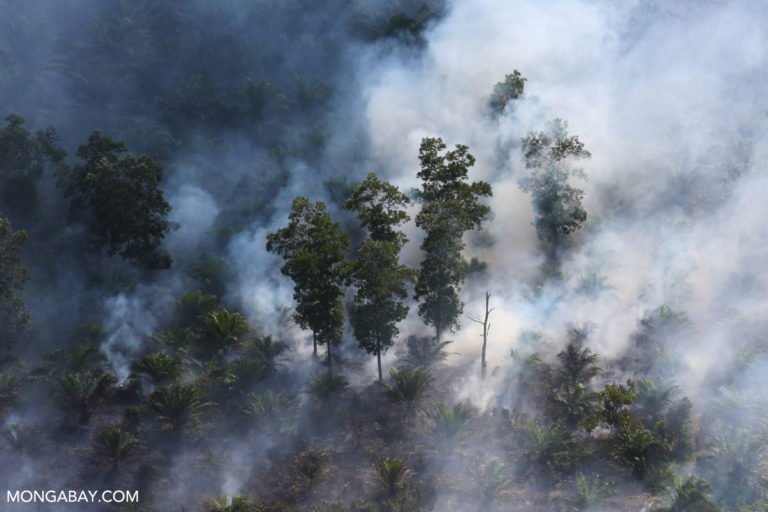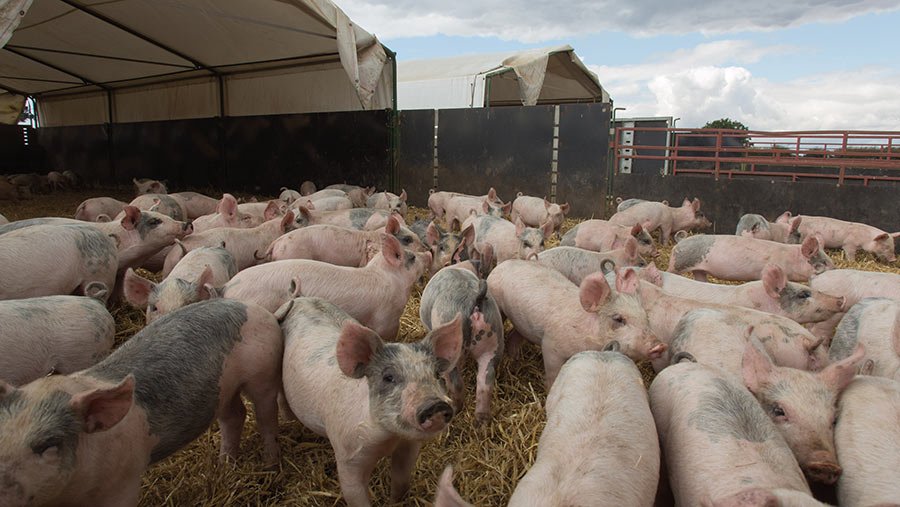- The decline in fish stocks in Nepal’s Koshi River threatens the mugger crocodile, a species already under pressure from historical poaching and habitat loss.
- A new study shows the crocodiles are increasingly encroaching into community-run fish farms in the buffer zone of the Koshi Tappu Wildlife Reserve in search of food, raising the risk of conflict with humans.
- At the same time, they face competition from gharials, a predominantly pescatarian crocodile that’s being introduced back into the Koshi as part of a government-run conservation program.
- “Making a vulnerable species compete with its critically endangered cousin doesn’t make sense,” says one of the authors of the study.
KATHMANDU — They can dig burrows during extreme weather events, run on land, and will eat just about anything. These traits, among others, make mugger crocodiles (Crocodylus palustris) a versatile species capable of adapting to change.
“As part of the study, we conducted a count of muggers in the reserve and its buffer zone area, where households and communities run private fish ponds supported by the wildlife reserve,” said Divya Bhattrai, the study’s lead author and a researcher at Nepal’s Agriculture and Forestry University. “We also assessed the threats muggers face in their habitat.”
The Koshi Tappu survey was conducted during Nepal’s winter, from mid-September to mid-December 2020, when the muggers come out to bask in the sun and are easier to spot. Bhattarai and her team observed 35 muggers, up from 16 recorded in 2013. “The number may have increased as we surveyed not only the protected area, but also private and community ponds of the adjoining buffer zone,” she said. Of the 35 individuals recorded, 19 were sighted in the buffer zone area next to community and private fish ponds.
While the easy pickings in the fish farms may be pulling the crocodiles into the villages, other factors are also pushing them away from the river, researchers say. According to the study, the wildlife reserve issued 466 licenses to Indigenous communities to fish in a small stretch of the river. But many license holders were found to be fishing more than their allotted quota, and many unlicensed fishers also operate in the area. “The fishermen told us that their yields have also gone down in the last few years,” Bhattarai said.
The researchers also found that the muggers seldom appeared threatened when moving amid humans living close to their habitats. Their distribution was little affected by human disturbance, distance to human settlements or even roads. “We found that one of the communities worshiped the muggers as their chief deity,” Bhattarai said.
This means the muggers have largely been given free rein to stroll into the fish ponds at any time. For most villagers, this behavior is tolerated to some degree, but when the losses reach a critical mass, they have a change of heart, said conservationist Ashish Bashyal, a member of the IUCN’s Crocodile Specialist Group, who was not involved in the survey. “Although crocodiles are sometimes called living dinosaurs or living fossils, they are extremely intelligent and can easily learn to find easy prey,” he added.
“This has the potential to increase human-crocodile conflict in the area,” said Santosh Bhattarai, a co-author of the study.
At the same time, the wildlife reserve doesn’t compensate villagers for their fish eaten by muggers. Such schemes already exist for livestock killed by tigers and leopards, and for crops damaged by elephants.
Ramesh Kumar Yadav, chief warden of the Koshi Tappu Wildlife Reserve, said it’s difficult to quantify how many fish a mugger may have eaten in a pond, let alone provide compensation for the loss.
Santosh Bhattarai said it might be too early to draw broad conclusions as more long-term data and in-depth studies are needed to ascertain the extent of this move by muggers away from the Koshi River and toward the fish farms. “But we can say with certainty that it has something to do with the [declining] fish stock in the river,” he added.
Competition with cousins
Even as both muggers and humans find it increasingly difficult to find fish in the river, another predator has entered the picture, piling even more pressure on an already dwindling resource. In February this year, the Nepali government released 20 captive-raised gharials (17 females and three males) into the Koshi River. Known for its distinctively slender snout that ends in a comically bulbous nose, the gharial feeds almost exclusively on fish.
“This is a matter of great concern,” Santosh Bhattarai said. “We see that the vulnerable muggers are not getting enough fish. But officials introduced the critically endangered habitat-food-reproduction specialist gharials into the river.”

A 2018 study on the coexistence of muggers and gharials in the Katarniaghat Wildlife Reserve in India, near the border with Nepal, suggests the two species are good at sharing habitat resources. But limited availability of fish stocks could strain their relations, Bhattarai said.
Yadav, the Koshi Tappu Wildlife Reserve warden, said the gharials were released into the Koshi River to raise conservation awareness among locals.
“The flagship species of the reserve until now has been the wild water buffalo [Bubalus arnee]. We want more species to be introduced so that the local community understands their value and takes steps in conservation of their habitats such as rivers in the case of gharials,” he said.
But putting muggers in competition with gharials threatens to push an already vulnerable species closer to the edge, Santosh Bhattrai said. “Making a vulnerable species compete with its critically endangered cousin doesn’t make sense.”
Banner image: A mugger crocodile in Chitwan National Park. Image by Quintus Ragnvaldr via Flickr (CC BY-NC-SA 2.0).
Citations:
Bhattarai, D., Lamichhane, S., Pandeya, P., Bhattarai, S., Gautam, J., Kandel, R. C., & Pokheral, C. P. (2022). Status, distribution and habitat use by mugger crocodile (Crocodylus palustris) in and around Koshi Tappu Wildlife Reserve, Nepal. Heliyon, 8(8). doi:10.1016/j.heliyon.2022.e10235
Choudhary, S., Choudhury, B. C., & Gopi, G. V. (2018). Spatio‐temporal partitioning between two sympatric crocodilians (Gavialis gangeticus & Crocodylus palustris) in Katarniaghat Wildlife Sanctuary, India. Aquatic Conservation: Marine and Freshwater Ecosystems, 28(5), 1067-1076. doi:10.1002/aqc.2911
Feedback: Use this form to send a message to the author of this post. If you want to post a public comment, you can do that at the bottom of the page.











